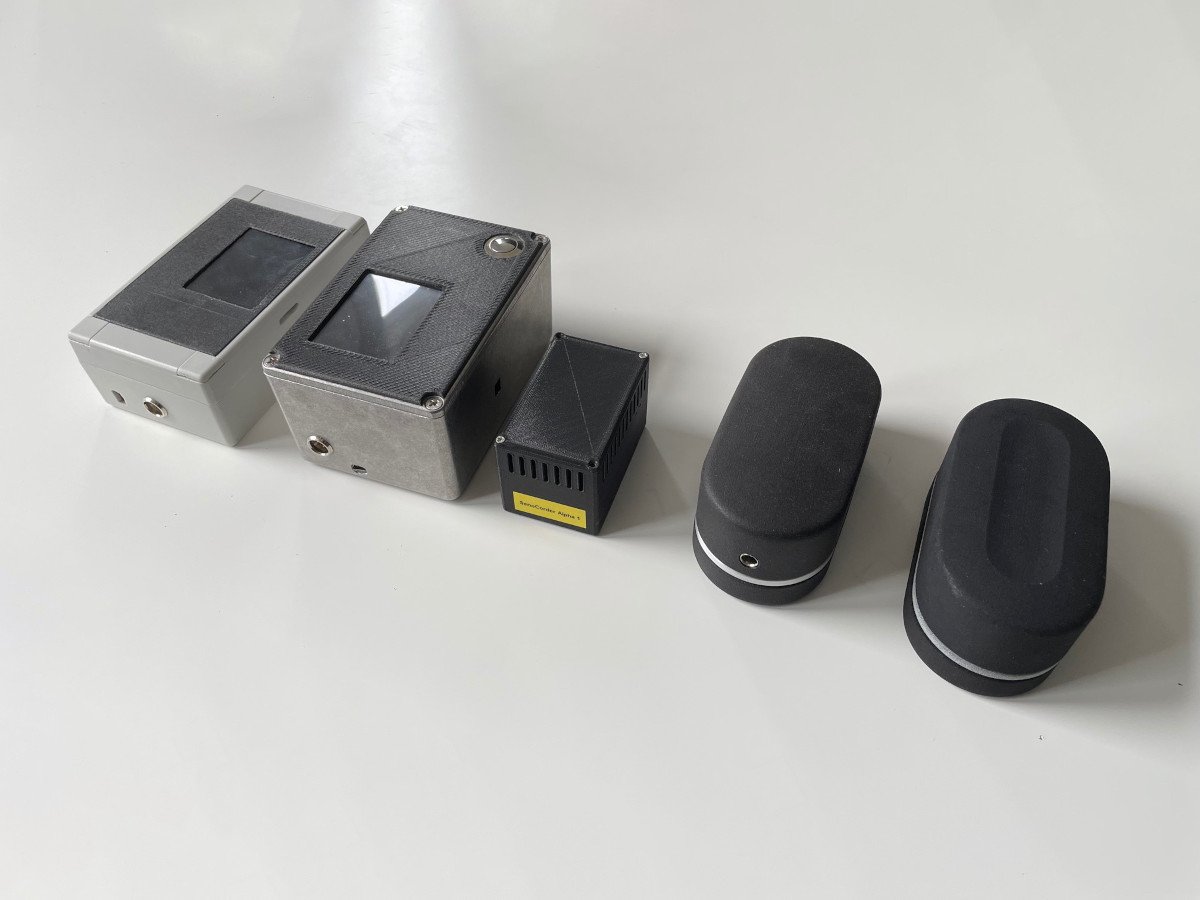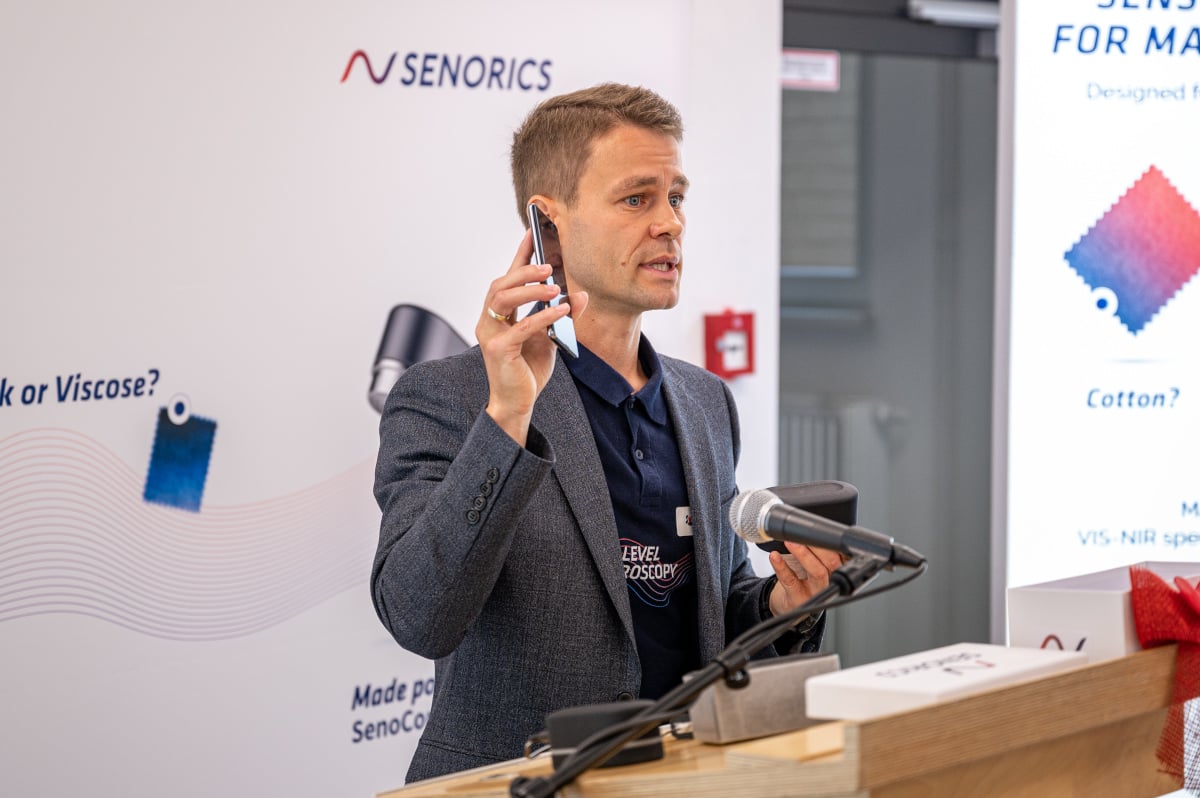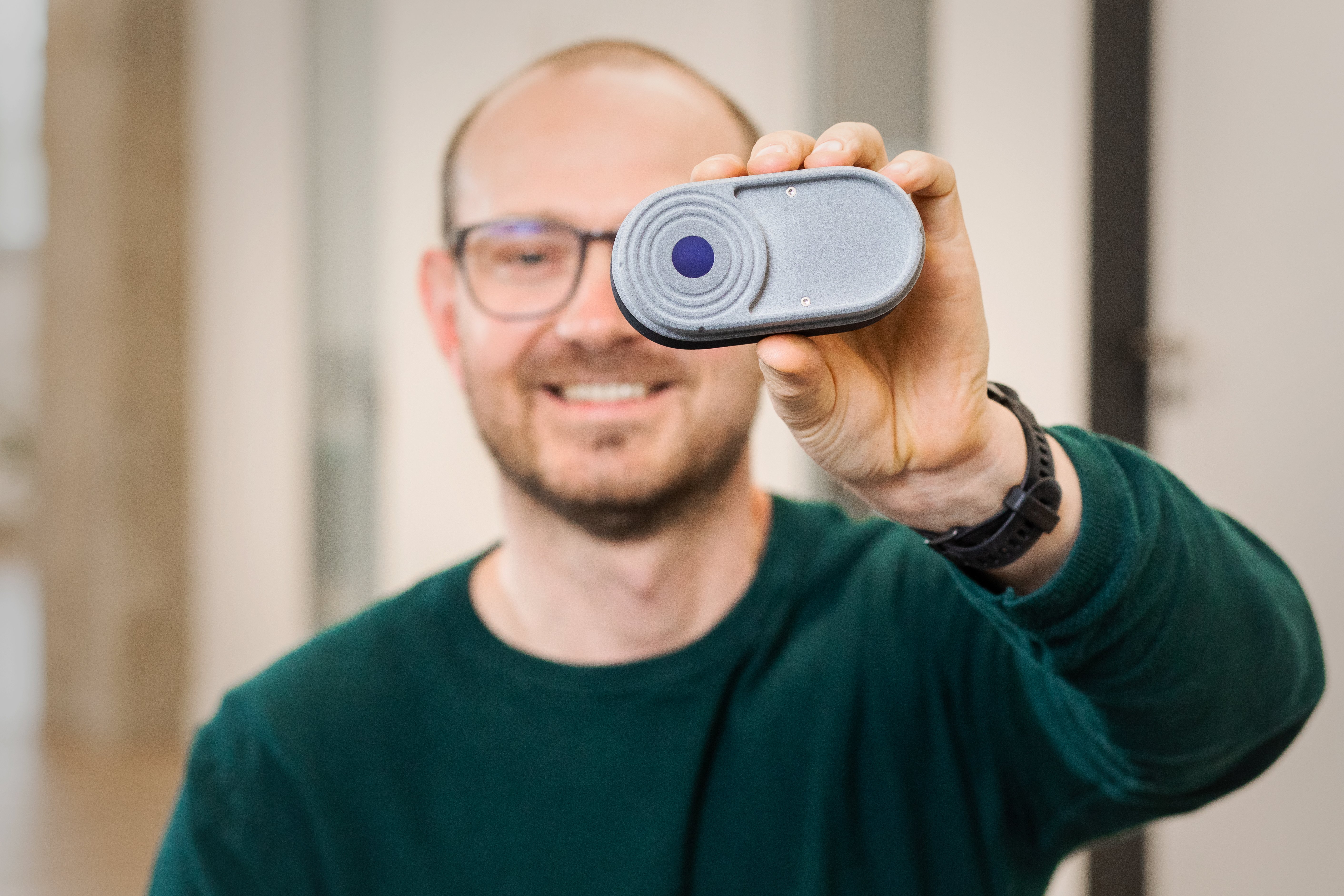Mobile analysis enables you to identify and quantify materials and their composition within the blink of an eye, no matter where you are. It can be used to detect a broad range of materials and parameters, such as moisture levels, sugar content, and textile compositions.
In this article we are going to give you insight into the history of the SenoCorder. What did it originally look like and how have its functions changed?
The history of our handheld device
It all started with the Textile Analyzer 1, Senorics’ very first handheld device. The development was followed shortly after by the Textile Analyzer 2. Both devices were prototypes, hard to reproduce and not suited for general sale. They were bigger than the current device and not nearly as handy. Nevertheless, they represented the first step in the evolution of the SenoCorder.
This is what the Textile Analyzer 1 and 2 were lacking compared to the current generation:
- No software connection (SenoSoft or SenoCloud), so new models couldn’t be easily added to the devices
- Low measurement accuracy
- Measurements took much more time
- No calibration standard integrated into the housing
- A power adapter was needed
In early 2019 the SenoCorder Alpha was launched, followed by the SenoCorder Beta in late 2019. Both devices were important developments on the journey towards the mass market, but they were still equipped with the old generation of NIR sensors. In 2020, the SenoCorder Solid was released. It was the first handheld device to be equipped with the newer and smaller generation of NIR sensors.
The SenoCorder Alpha was smaller than the SenoCorder Solid as can be viewed in the picture below. This is because the housing of both, the SenoCorder Beta and SenoCorder Solid, was provided with enough space for the possible integration of a battery pack.
Compared to the Textile Analyzer 1 and 2, the SenoCorder Solid stood out with the following features:
- A Bluetooth connection to SenoSoft and SenoCloud
- High measurement accuracy and reproducibility
- Measurements and model predictions within a few seconds
- A calibration standard integrated in the housing
- A battery pack as power source for increased flexibility

Left to right: Textile Analyzer 1, Textile Analyzer 2, SenoCorder Alpha, SenoCorder Beta, SenoCorder Solid
The latest generation: The SenoCorder 2.0
The launch of the SenoCorder 2.0 in 2022 revealed further improvements. The newest device has an integrated battery and does no longer rely on a separate battery pack. Additionally, it is even more accurate in its ability to identify and quantify materials.
Most excitingly, the SenoCorder 2.0 is compatible with the SenoApp - a mobile app enabling you to control the SenoCorder with your Android or iPhone. This gives you even more flexibility, as you don’t have to ensure excess to a computer every time you want to record a measurement.
 CTO Dr. Robert Brückner presenting the SenoCorder 2.0 and the SenoApp at Senorics’ 5th anniversary in 2022
CTO Dr. Robert Brückner presenting the SenoCorder 2.0 and the SenoApp at Senorics’ 5th anniversary in 2022
Looking into the future
As we all know, there is always room for improvement in life. This is why we are continuously working on making our handheld device faster, smaller, and more accessible.
We are also focusing on further applications, also known as chemometric models, so that as many people as possible can experience the positive benefits of Material Sensing.
How do you imagine the SenoCorder of the future? Maybe every smartphone will serve as a mobile analysis device one day. Until then, get your hands on the SenoLab: an offer including the SenoCorder, a free application, access to our mobile app, and comprehensive support. Check it out and experience the possibilities yourself.





